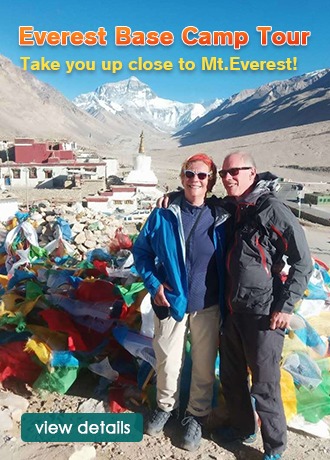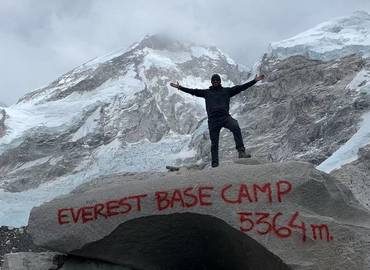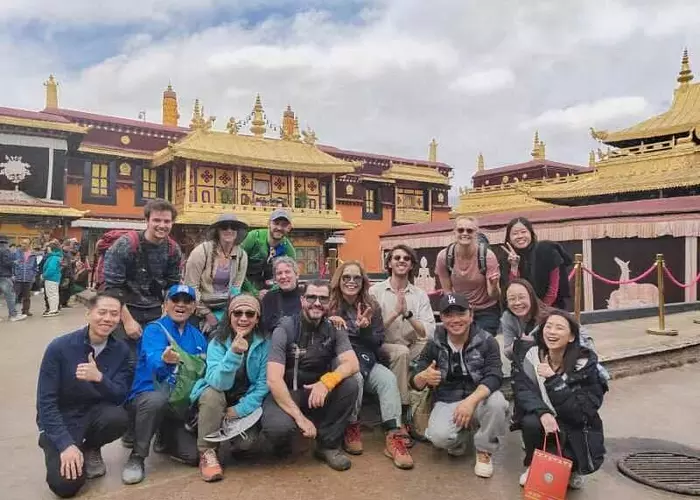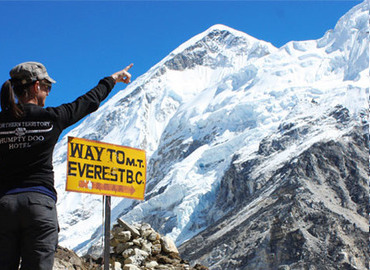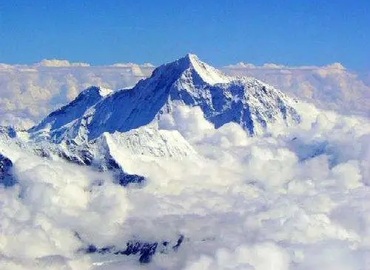30 Interesting Facts About Mount Everest
- Catherine
- Last Updated : 06/25/2025
Mount Everest, with an elevation of 8,848 meters (29,029 feet), is the highest mountain in the world. Mount Everest shapes like a giant pyramid. The towering image has been attracting explorers from all over the world. Here we collect 30 facts about Mount Everest that you might be interested in.
1. Other Names of Mount Everest
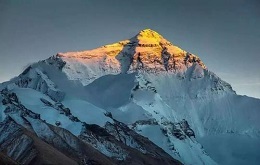
Tibetans call the highest peak Chomolungma or Qomolangma. It means Goddess Mother of Mountains. The Nepali name of Mount Everest is Sagarmatha, meaning Forehead in the Sky. The mountain is now part of the Sagarmatha National Park.
2. Mount Everest is Originally Named After an Englishman
Mount Everest has been named after George Everest - the director of the governmental Survey of India from 1830 to 1843, who was the first person to organize a team and measure the Himalayas Mountains. Thus, we call it today "Mount Everest". In 1841, this tall mountain was finally recognized for its specialty.
3. Radhanath Sikdar was the First Person to Discover Mt Everest
Unlike how most people think, Mt Everest is not discovered by George Everest. Although the mountain is named after George Everest, he was not the first one to identify it as the tallest mountain in the world. Mt Everest was instead discovered by an Indian, Radhanath Sikdar, an Indian surveyor and a mathematician.
4. Mount Everest is in China and Nepal
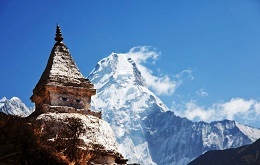
Mt Everest is located between China and Nepal, China to the north, and Nepal to the south. It spreads across from the spectacular regions of Tibet to beautiful Nepal.
5. Mount Everest Has Two Heights
The snow cover height (total height) used in Nepal and other countries is 8,848 meters (29,029 feet). And the rock height announced officially by China is 8,844.43 meters (29,017.2 feet).
6. Mount Everest Camps
There are five other camps on the Chinese side, in addition to Everest base camp (5,150 meters /16,900 feet), Camp 1, at altitudes of 5,800 meters (19,028 feet), camp 2 - 6,500 meters (21,325 feet), camp 3 - 7,028 meters (23,057 feet), camp 4 - 7,790 meters (25,557 feet), and camp 5 - 8,300 meters (27,230 feet). There are four other camps on the Nepalese side, despite the base camp (5,364 meters /17,598 feet). These camps are meant more as stations, breaks, or depots by climbers. And please no worry, you will find the camps while climbing down as well.
7. Mount Everest is Growing
It is estimated that the average height of Mt Everest increases by about 20 ~ 30 meters per 10,000 years. That's to say that the mountain continues to grow a height of 20cm per century.
8. Mount Everest is Not the Tallest Mountain
Although Mount Everest is the highest mountain on Earth above sea level, the world's tallest mountain is Mauna Kea, an extinct volcano in Hawaii. The mountain extends 6,000 meters (20,000 feet) below sea level. If measured from the ocean floor, its total height would be 10,200 meters (33,465 feet), almost a full mile higher than Mount Everest.
9. Little Known that Male Lion Hide at Mount Everest Top
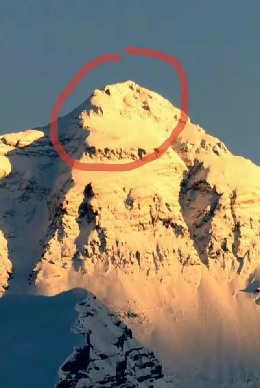
A lama told Tenzin Nogai (the Nepalese who first climbed Mount Everest) that according to the scriptures, there was a golden lion at the top of Mount Everest. Tenzin Nogai did not find it because the golden lion was on the Tibetan side.
10. The Climate is Harsh
The lowest temperature at the summit of Mt Everest is minus 30 or 40 degrees Celsius all year round. The air at the summit contains only a quarter of the oxygen of the eastern plains. Winds can reach 200 miles an hour.
11. Mount Everest is 450 Million Years Old
Mount Everest actually formed 450 million years ago, which is older than the Himalayas. The area where Mount Everest is found used to be an ocean. We can still see Marine life and shell fossils in the upper part of Mount Everest. The limestone and sandstone at Mt Everest peak were once part of an ocean floor sedimentary rock.
12. Above 8,000 Meters Region is Called the Death Zone
From Camp 4 to the mountain peak, mountaineers enter what is often called the "death zone." Over 8,000 meters (26,247 feet), 95% of climbers will experience Oxygen deficiency and extreme cold. Whereas, helicopters, rescue policies and GPS devices will be limited.
13. Over 300 People Died on Mount Everest
Since the first successful summit in 1953, more than 300 people have died in the Himalayas, mostly Sherpa guides. Injury, altitude sickness, and hypothermia are the main three causes and mainly during the descent.
14. It Costs USD30,000 ~ 130,000 to Climb Mt Everest
Tour companies charge visitors $30, 000 to $130, 000 or more to get permits, prepare equipment, find guides, and ensure contingency planning. This includes $11,000 paid directly to the Nepalese government. High-end luxury packages will also include up to five Sherpa guides for each mountaineer to meet customized needs such as an unlimited supply of oxygen tanks, more comfortable tents, and even hot showers.
15. Kami Rita Reached Everest Summit the Most Times
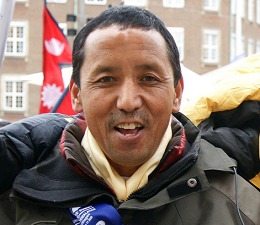
Sherpas (people scattered across the Himalayas on the borders of Nepal, China, India, and Bhutan.) - Kami Rita has reached the summit 24 times, holding the record for the most attempts. Two other admirable Sherpas, Apa Sherpa and Phurba Tashi, each of them has reached the summit 21 times. Several of Apa's expeditions have been devoted to raising awareness of climate change and protecting homes.
16. Edmund Hillary was the First Person to Reach the Peak
The first people who climbed Mount Everest peak were Edmund Hillary from New Zealand and Tenzing Norgay from the Sherpa tribe of Nepal. They climbed the Everest peak on May 29 from the Nepal border. Initially, Colonel John Hunt was the one to lead a British expedition to climb the Everest peak. Hillary and Tenzing were a part of this expedition. Eventually, they became the first ones that could successfully cover all the distance.
17. 7000 People Reached the Peak of Mt Everest Successfully
On an annual basis, around 800 people try to climb Mt Everest peak. More than 7,000 people have taken the challenge.
18. The Window to Reach the Summit - April, May, September
When can you climb Mount Everest? Well, it is hugely occupied by jet streams almost throughout the year. During those times climbing the mountain is next to impossible because of extremely low temperatures and strong winds. The winds are slower during the month of May and September. The months when the place sees the highest traffic are April and May. For mountaineers, this is the safest time. Another additional factor is that during this period, there is no harsh winter snowfall or dangerous monsoon falls.
19. 40 Days At Least to Reach the Mt Everest Peak
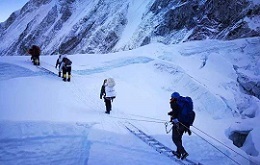
How much time do you think one takes to climb up to the Mt Everest peak? Well, count that in days and months. You will need three months to make the full journey. First, you are required 19 days just for the round trips of trekking to and from the Everest base camp. Once you have reached the Mount Everest base camp, you will be taking 40 extra days to wait for the best weather and reach the peak of Mt Everest.
20. Up to 18 Routes to Climb Mount Everest
So, how can you climb Mount Everest? There are not one but 18 routes overall for it. All of these routes are different but lead to the same destination. Out of all these, the most popular ones are the Northeast Ridge Standard Route and the South Colony Route.
21. Green Boots is Like a Wakeup Call
The owner of the green boots is Tsewang Paljor, an Indian mountaineer. Almost every mountaineer who climbs Mt Everest along the northeast ridge has previously passed by Green Boots on their way through the death zone at an altitude of about 8,500 meters. Today, the location is also known as the "Green Boot Cave," where many people take a break to catch their breath or recharge their batteries.
22. Climbing Mount Everest Doesn't Hold the Highest Death Rate in the Himalayas
Although Everest is the mountain with the most deaths, it is not the mountain with the highest mortality rate. Among the mountains with more than 1,000 climbers, Everest had a death rate of 1.37%, only the seventh-highest. Annapurna I had a 4.07% death rate, more than double of Everest's.
23. Disobeying Guides Also Causes Death on Everest
The cause of death is not about traffic jams but about not listening to the guide's command. In recent years, as the number of climbers has risen, waiting to reach the summit has often led to long lines, leaving climbers with frostbite on their feet and hands, but not necessarily death. Those who died, for the most part, were stubborn and didn't follow the guidance.
24. Another Four 8000m Mountains Near Everest
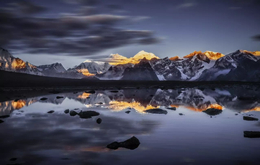
Mt. Everest is part of the Himalayas. There are four other mountains near Everest, namely Makalu Mountain (8,463m), Cho Oyu Mountain (8,153m), Lhotse Mountain (8,501m), and Lhotse Shar Mountain(8,393m). Everest Mountain is the third.
25. Jordan Romero Peaked on Everest at Thirteen
The youngest climber to reach the summit was an American, Jordan Romero, at only 13. He reached the peak from the North slope on May 23, 2010.
26. Peaking on Mt Everest Without an Oxygen Supply Takes Up 2.7% of the Total
Overall, at the top of Mount Everest, each breath typically takes in about 66 percent less oxygen than at sea level. But Rennard Messner and Peter Harper (Italy) did not use oxygen cylinders when they reached the summit in 1978. Following their example, 193 mountaineers reached the summit without using oxygen tanks.
27. The First Woman Climbed Mt. Everest - Junko Tanabe
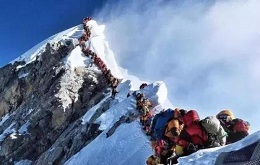
On May 16, 1975, Japanese Junko Tanabe climbed from the south slope and became the first woman to climb Mount Everest in the world. In the same year, Tibetan Pando became the first woman to climb from the northern slope.
28. The Highest Dispute in History
In 2013, three mountaineering enthusiasts Ueli Steck, Simone Moro and Jonathan Griffith continued ignoring the Sherpa's order of rest but kept climbing. Their behaviors angered the local Sherpa people, which caused a fierce dispute. Finally, the two sides signed a peace agreement in the presence of a Nepalese military officer.
29. Traffic Jams On Mount Everest
More and more attempts to reach the top of Mount Everest have resulted in a large number of climbers getting stuck near the summit.
In just half a day on May 19, 2012, 234 people made it to the summit, but four died trying to descend. The incident makes people raise safety awareness.
30. Months’ Physical Training Is Necessary
If you are serious about climbing Mount Everest, make sure that you have a professional guide with you. You will also need months, if not years, of training before climbing the peak.
Email response within 0.5~24 hours.


